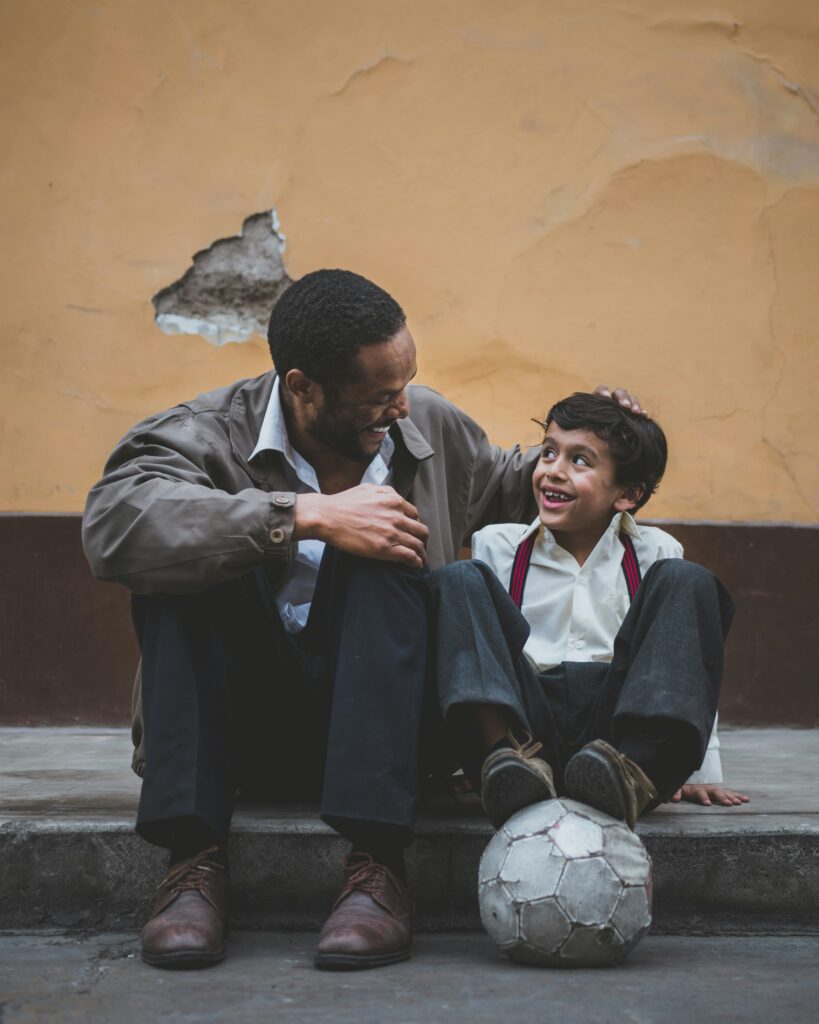
As parents, we always want what's best for our children. We strive to provide them with a loving and nurturing environment. Sometimes, despite our best efforts, our children may need extra support. Therapy for children can be a valuable tool in helping them navigate challenges and develop coping skills. In this blog post, we will discuss when to take your child for therapy, signs your child might need therapy, and how parents can be involved in the therapeutic process without getting in the way.
Understanding the Role of Therapy in Children's Lives
The purpose of therapy for children extends far beyond mere conversation. It's a structured environment where young ones can explore their innermost feelings, thoughts, and behaviors under the guidance of a trained professional. This safe space is instrumental in helping them face various challenges, ranging from academic pressures to personal struggles. Through therapeutic engagement, children acquire valuable skills that aid in emotional regulation, enhance resilience, and foster a positive self-image. These skills are foundational to their ability to adapt and thrive in different situations they encounter as they grow.
Therapy also acts as a bridge, connecting children to their potential by unlocking avenues for personal growth and self-discovery. It's a place where their voices are heard and validated, which is crucial for building trust and openness. Therapeutic sessions are tailored to the child's age, developmental stage, and unique needs. It ensures that the interventions are both accessible and engaging. Activities may include play, art, or conversation, each serving as a medium through which children can express themselves freely and creatively. By nurturing these expressions, therapy contributes to their overall well-being. It can prepare them for the complexities of life with confidence and adaptability.
Key Indicators Your Child Might Need Professional Support

Identifying the right moment to seek therapy for your child often requires astute observation of their behaviors and emotional responses. Notable signs that may indicate the need for professional support include a marked shift in mood or demeanor. This could be an unusual increase in irritability, sadness, or anger. You might also observe your child struggling with managing stress, displaying an overwhelming sense of worry or fear that doesn’t align with the usual ups and downs of childhood. Another red flag is a significant change in their eating or sleeping patterns. This can be symptomatic of deeper emotional turmoil.
Social withdrawal is another critical indicator. If your child is suddenly less interested in spending time with friends or participating in activities they once enjoyed, it could signal distress. Academic performance can also be affected. This can be seen as declines in grades or a reluctance to attend school potentially pointing to underlying issues. Additionally, an increased sensitivity to rejection or failure, manifesting in either aggression or retreat, can be a tell-tale sign of emotional struggle.
These indicators, particularly when persistent or intensifying, suggest that your child could benefit from the professional support therapy offers. Observing any combination of these behaviors warrants a closer look and potentially initiating a conversation about therapy, keeping in mind the child's overall well-being and the potential benefits of early intervention.
Common Misconceptions About Therapy for Children
Many parents harbor misconceptions about therapy for children that can hinder them from seeking timely help for their little ones. A prevalent myth is the belief that therapy is a sign of failure on the parent's part, suggesting they haven't managed their child's issues effectively. This misconception couldn't be further from the truth. Therapy is a proactive step toward understanding and resolving a child's challenges, emphasizing strength and resilience rather than failure.
Another widespread misconception is that children are too young to benefit from therapy. People often underestimate children's capacity to experience and communicate complex emotions. With the right approach, even young children can express themselves. They can gain insight from therapeutic interventions designed specifically for their developmental level.
There's also a belief that discussing problems in therapy might encourage negative behavior or exacerbate issues. On the contrary, therapy provides a controlled environment where children learn to articulate their feelings and develop healthy coping mechanisms. This safe exploration can prevent problems from escalating and teach children valuable life skills.
Lastly, some think therapy will make children dependent on professional support for life. In reality, therapy aims to equip children with the tools they need to navigate their emotions and situations independently. It fosters long-term resilience and emotional health. Addressing these misconceptions can open pathways to healing and growth for many families.
The Right Time to Seek Therapy for Your Child

Deciding the optimal moment to initiate therapy for your child can be nuanced and deeply personal. Observing persistent or escalating concerns in their behavior, emotional well-being, or social interactions can be significant indicators. Such signs might include uncharacteristic mood changes or heightened anxiety. It can also be difficulty in coping with daily stresses, or a noticeable decline in academic performance. It's important to acknowledge these signals without delay, as early engagement with a therapeutic process often leads to more effective outcomes.
Recognize that as a parent, your intuition about your child’s needs is valuable. If you observe behaviors or emotional states in your child that cause concern, it may be an indication to explore therapeutic options. Ultimately, the decision should be guided by a desire to support your child in achieving a healthier, more balanced state of well-being. Engaging in therapy should be viewed as a proactive measure, not a last resort. It can be a pivotal step towards fostering resilience and emotional health in your child.
How Parents Can Be Involved in Their Child's Therapy
Engagement and cooperation from parents are instrumental in enhancing the effectiveness of therapy for children. One of the primary ways parents can contribute is by establishing and maintaining an open line of communication with the therapist. This doesn’t mean infringing on the confidential space of the child’s therapy sessions. It means, staying informed about general progress and ways to support therapy goals at home. Following the therapist's guidance, parents can integrate specific strategies into daily routines. This can reinforce the skills their child is developing during sessions.
Being an active participant also involves educating oneself about the child’s challenges and the therapy process. Attending parent-focused sessions or workshops, when available, can provide valuable insights into understanding and managing your child’s needs more effectively. Additionally, creating a supportive home environment that mirrors the principles taught in therapy encourages consistency. It also aids in the child’s adaptive learning.
Moreover, it's crucial for parents to model healthy coping mechanisms and emotional expression. Children often learn by observing the behavior of adults in their lives. This makes it important for parents to demonstrate resilience and positive problem-solving in their own lives. Engaging in these practices not only assists the child's therapeutic journey but also fosters an atmosphere of mutual growth and learning within the family.
Preparing Your Child for Therapy

Introducing your child to the concept of therapy can be approached with sensitivity and openness. It's important to frame therapy as a positive and empowering step towards feeling better, rather than as a consequence of something being wrong. Use age-appropriate language to explain that the therapist is someone they can talk to about their feelings, thoughts, and anything that might be bothering them, in a place where it's safe to explore those feelings. Highlight that, like going to a doctor when we're physically sick, therapists help us when our feelings or thoughts need attention. Like a feelings doctor!
Encourage your child to view this as an opportunity to learn more about themselves and develop strategies to handle challenging emotions or situations. You can also alleviate any worries by discussing the structure of therapy sessions. This emphases the engaging activities they might do, like drawing or playing, which help in expressing themselves. Preparing them with reassurance and positivity paves the way for a more receptive and less apprehensive start to therapy.
Choosing the Right Therapist for Your Child
Selecting an appropriate therapist is a pivotal step in ensuring your child's therapeutic journey is both positive and impactful. Start by seeking a professional who is not only qualified but also specializes in pediatric mental health. Their expertise in dealing with children’s issues will be beneficial for addressing your child’s specific needs. Compatibility between your child and the therapist is also crucial; a therapist who resonates well with your child's personality and unique challenges can significantly enhance the therapy's effectiveness. Make an effort to understand the therapeutic methods being proposed. Therapists may employ various approaches, such as cognitive-behavioral therapy, play therapy, or others, depending on what they believe will best suit your child.

It’s advantageous to solicit feedback from your child after initial sessions. This can provide insights into how comfortable and understood they feel, which are key indicators of a fruitful therapeutic relationship. Furthermore, ensure that the therapist’s logistical details, like location and availability, align with your family's schedule and needs to facilitate a consistent therapy schedule.
Transparency regarding the therapy process and expected outcomes is also vital. A therapist who communicates openly with you about your child's progress and strategies for support outside of sessions can greatly contribute to a cohesive approach to your child's well-being. In essence, finding the right therapist involves a blend of professional qualifications and personal compatibility, underlined by a mutual commitment to your child's mental health journey.

Art therapy is an incredibly powerful modality for treating mental health conditions in children. This type of therapy uses art and creative expression to help children work through emotions, worries, and trauma. A child therapist trained in art therapy can create a safe and supportive environment for children to explore their feelings and gain insight. Art therapy allows children to communicate what they might not be able to express in words and can be extremely beneficial in helping them work through their issues. With the help of an experienced child therapist, art therapy can be an invaluable tool for treating mental health conditions in children.
The Magic of Communication and Expression Through Art
Art has a unique way of transcending language and allowing individuals to express themselves in a deeply meaningful way. For children, who may struggle with verbalizing their thoughts and emotions, art therapy provides a powerful tool for communication and expression.
When a child engages in art therapy, they are given the freedom to explore and create without judgment. Through various art mediums such as drawing, painting, and sculpting, they can externalize their internal world, giving a voice to their feelings and experiences.
One of the remarkable aspects of art therapy is that it goes beyond the limitations of traditional talk therapy. Children who may find it difficult to articulate their thoughts or are unable to put words to their emotions can find solace and relief in the process of creating art.
Art therapy provides a safe and non-threatening environment where a child therapist, who specializes in this modality, can guide and support them. Through their art, children are able to express emotions, process traumatic experiences, and gain insights into their own thoughts and behaviors.
The magic of communication and expression through art is not limited to a single session. Over time, art therapy can help children build self-awareness, improve coping skills, and enhance their overall mental well-being.
If your child is struggling with emotional or behavioral challenges, consider the power of art therapy. Our board-certified art therapist is here to help your child find their voice, discover their inner strengths, and create a path towards healing and growth.
Why is Art Therapy a Good Modality for Children?
Art therapy is a highly effective modality for children because it provides them with a safe and non-threatening way to express themselves. Children may not always have the verbal skills to articulate their emotions or experiences, but through art, they can communicate their thoughts, feelings, and experiences in a tangible and creative way.
Art therapy allows children to explore their inner world and externalize their emotions in a visual form. It provides a space for self-expression and self-discovery, allowing them to process difficult emotions and experiences that they may not be able to put into words.
Art therapy also helps children develop important coping skills and resilience. By engaging in the creative process, they learn to problem-solve, regulate their emotions, and gain a sense of control over their lives. This can be particularly beneficial for children who have experienced trauma or are struggling with mental health conditions such as anxiety or depression.
Additionally, art therapy provides a supportive and nurturing environment. Working with a trained child therapist, who specializes in art therapy, ensures that the child receives individualized attention and guidance. The therapist can help the child explore their artwork, facilitate discussions about their emotions, and help them make connections between their art and their experiences.
Overall, art therapy is a valuable modality for children as it fosters self-expression, emotional growth, and healing. If your child is struggling with mental health challenges, consider booking a session with our board-certified art therapist to provide them with the support and tools they need to thrive.
Common Techniques Used with Kids
Art therapy offers a range of techniques that are specifically tailored to engage children and help them express their emotions and experiences. These techniques, guided by a trained child therapist, create a safe and nurturing environment for children to communicate and heal. Here are some common techniques used in art therapy for kids:
1. Art Therapy Assessments: Child therapists may use assessments to understand a child's emotional state and any potential mental health conditions. These assessments can include drawing tasks like "Draw a Person" or "House-Tree-Person" that allow the therapist to gain insight into the child's thoughts and feelings.
2. Visual Art Techniques: Using different art materials and techniques, children can express their emotions, thoughts, and experiences visually. This can include spontaneous drawing, collages, sculptures, mandalas, or drawing their family. By discussing their choices and themes, the therapist can help the child explore and process their emotions.
3. Dramatic Techniques: Through psychodrama techniques like the "empty chair" or family sculpting, children can act out scenarios and explore their emotions in a safe and controlled way. These techniques allow the child therapist to better understand the child's disorder, patterns, and provide opportunities for emotional regulation.
4. Writing Techniques: Writing assignments such as letter writing, journaling, or poetry can help children express complicated feelings and experiences. These techniques provide a constructive outlet for emotional expression and can foster post-traumatic growth.
5. Movement/Somatic Techniques: Movement techniques like dance and pantomime enables children to physically express their emotions and explore new behaviors. This allows them to develop a deeper understanding of their emotions and develop healthy coping mechanisms.
6. Music Techniques: Appreciating and identifying music that elicits different mood states can teach children mindfulness skills, mood management, and enhance their ability to express emotions. Activities like drum circles, playing instruments together, and group listening can further support the development of these skills in social settings.
Overall, these techniques provide children with a variety of creative ways to communicate, process emotions, and develop resilience. By working with a trained child therapist in art therapy, children can find healing and growth through self-expression.
Mental Health Conditions that Can Be Treated through Art Therapy
Art therapy has been proven to be a powerful modality for treating a variety of mental health conditions in children and adolescents. With the guidance of a trained child therapist, art therapy can provide a safe and creative outlet for children to express and process their emotions.
Children who experience anxiety, depression, and post-traumatic stress disorder (PTSD) can greatly benefit from art therapy. Through the use of art materials, children can externalize their inner struggles and fears, allowing them to gain a better understanding of their emotions and experiences.
For children who are dealing with psychosis or medical conditions like cancer and traumatic brain injury (TBI), art therapy can provide a sense of control and empowerment. Creating artwork can help these children regain a sense of identity and agency in the face of their illness or condition.
Art therapy can also be effective for children who are struggling with family or marriage concerns. By engaging in art-making activities, children can explore their family dynamics and communicate their thoughts and feelings in a non-verbal way.
In addition, art therapy has shown positive outcomes in treating children with low self-esteem, substance use disorders, and eating disorders. Through the art-making process, children can build self-confidence, develop healthier coping strategies, and improve their body image and self-perception.
If your child is experiencing any of these mental health conditions, consider booking a session with our board-certified art therapist today. They will work with your child to create a safe and supportive environment for them to explore their emotions and heal through art. Art therapy truly has the power to transform the lives of children and adolescents, offering them a path toward healing and self-discovery.
Book with Our Board Certified Art Therapist Today
Are you looking for a qualified and compassionate child therapist who specializes in art therapy? Look no further than Sarah Cupka, LCAT our board-certified art therapist. Sarah has a passion for working with populations of trauma of all ages, particularly children. Her journey of healing from intimate partner violence has inspired her to help others on their path to recovery.
Sarah completed her Master of Arts in Art Therapy and Counseling and Master of Science in Clinical Mental Health Counseling at Long Island University Post. During her studies, Sarah completed several internships, gaining valuable experience working with children and adolescents in both individual and group art therapy settings. She has witnessed firsthand the transformative power of art therapy in helping children communicate and express themselves in ways that words often cannot.
As a board-certified art therapist, Sarah is committed to providing a safe and supportive space for children to explore their emotions and develop healthy coping skills. Whether your child is struggling with anxiety, depression, trauma, or other mental health conditions, art therapy can be a powerful modality for healing.
Don't wait any longer to give your child the support they need. Book a session with Sarah, our board-certified art therapist, and begin the journey toward healing and growth. Contact us today to schedule an appointment. Your child deserves the transformative benefits of art therapy.
Sending Love & Light,
In todays society I feel many people, especially the younger generations are just completely absorbed in technology. They stare mindlessly into their smart phones, I-pad, laptop etc. and unfortunately miss the beauty that surrounds them. It can be a very humbling and awe inspiring experience when you realize the vastness of nature that surrounds you; even in midst of heavily trafficked suburban areas or on your drive to work, nature is pervasive.
Making Nature Fun
Walking through your local parks, forests, etc. with your children and really looking around and enjoying the present moment yields a much different experience than that of what many experience in todays modern society. It promotes mindfulness, connectedness, togetherness and an appreciation for our earth. Getting your child away from the screens and bringing them through the trails of one of your local parks can be a great way to facilitate that connectivity between your surroundings and your family. To take it a step further, learning about the local plant life and the role it plays in your environment will not only deepen the bond that you and your child form with nature and your local habitat, but can also be a deeply satisfying and rewarding experience; soon enough your child may even be teaching you a few things. If just getting your little one away from paw patrol or bubble guppies and out into nature is enough of a task right now, that is perfectly fine. Maybe once out into the woods you create your own show (Pine Cone Patrol) that can only be experienced out in the wild (you would have to come up with the characters, character development, plot, illustrations, lighting, etc.; I can’t do everything).
Research on Benefits of Being in Nature
If the prospect of leaving the warm comfy couch cushions that have molded to the shapes of you and your little ones bodies is still too uncomfortable of a thought, listen up because there has actually been some very interesting research on the benefits of immersing oneself in nature and how it may benefit your overall health (I don’t think watching a few episodes of man vs. wild will have the same therapeutic effect).One such study conducted by Repke, Berry, Conway, Metcalf, Hensen and Phelan (2018) found that study participants who scored high on items determining their accessibility to nature (accessibility to nature measured as prevalence of parks or other pleasant natural features nearby, amount of time spent outdoors and how safe one feels being outdoors in the area they live) found that those that scored high on the accessibility to nature measure also showed statistically significant higher scores on mental health measures. Another interesting finding in this study is that those participants who had increased accessibility to nature also showed lower scores on a task that measured impulsivity in decision-making. More interesting yet, participants place of residence was also examined to assess their proximity to nature (natural land cover) in their area. Interestingly enough, it was found that geospatial proximity of the participants to nature had no significant effect on health measures or reducing impulsive decision-making.
These findings are interesting in that they may suggest that there is not so much a link between your proximity to nature and mental/physical health, but rather your relationship with the nature in your surrounding area is what positively impacts your health. Let’s be honest, we could all use some decreases in impulsivity and definitely decreases in stress! Knowing that simply exposing yourself to nature (No, not in that way!) can potentially provide these benefits for you and your child (did I mention it’s free…), why would you not take advantage of this? Go out there and hug a tree; connect with your children, your environment and become healthier in the process.
Stay Shining,
Reference:
Repke MA, Berry MS, Conway LG, III, Metcalf A, Hensen RM, Phelan C (2018) How does nature exposure make people healthier?: Evidence for the role of impulsivity and expanded space perception. PLoS ONE 13(8): e0202246. https:// doi.org/10.1371/journal.pone.0202246